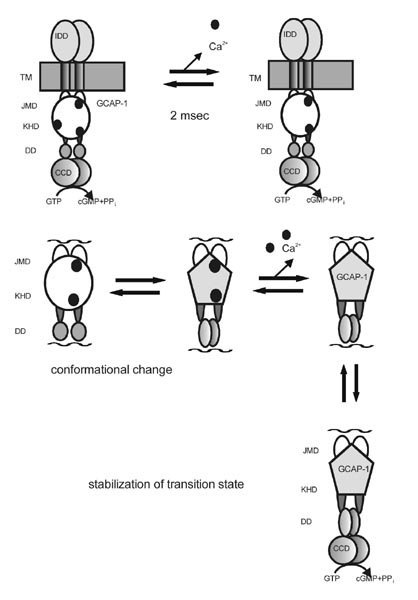From: Target Recognition of Guanylate Cyclase by Guanylate Cyclase-Activating Proteins

Madame Curie Bioscience Database [Internet].
Austin (TX): Landes Bioscience; 2000-2013.
Copyright © 2000-2013, Landes Bioscience.
NCBI Bookshelf. A service of the National Library of Medicine, National Institutes of Health.
